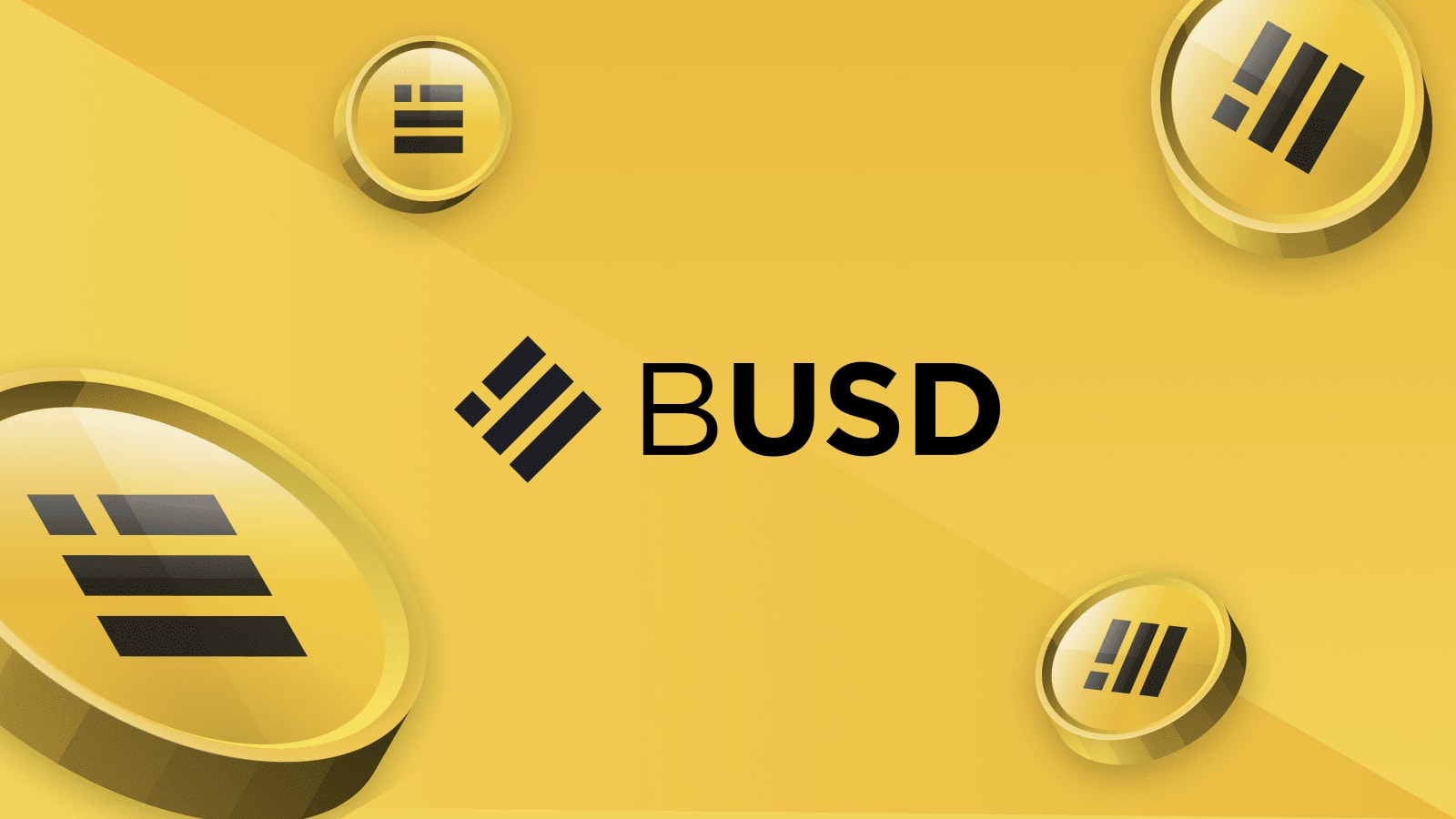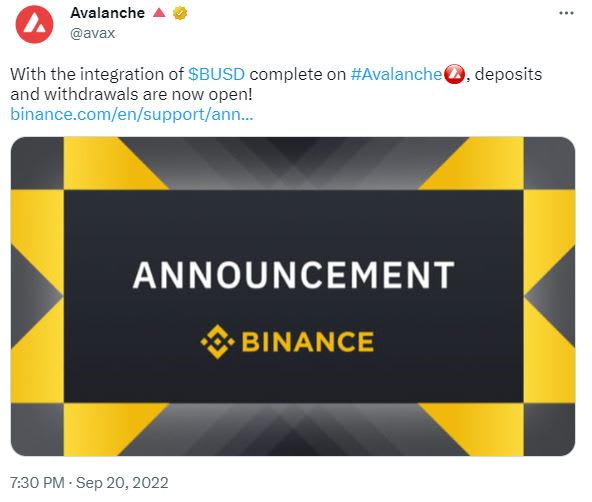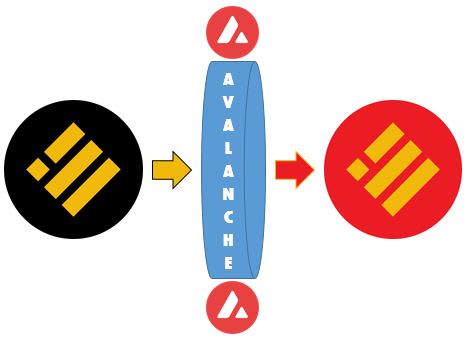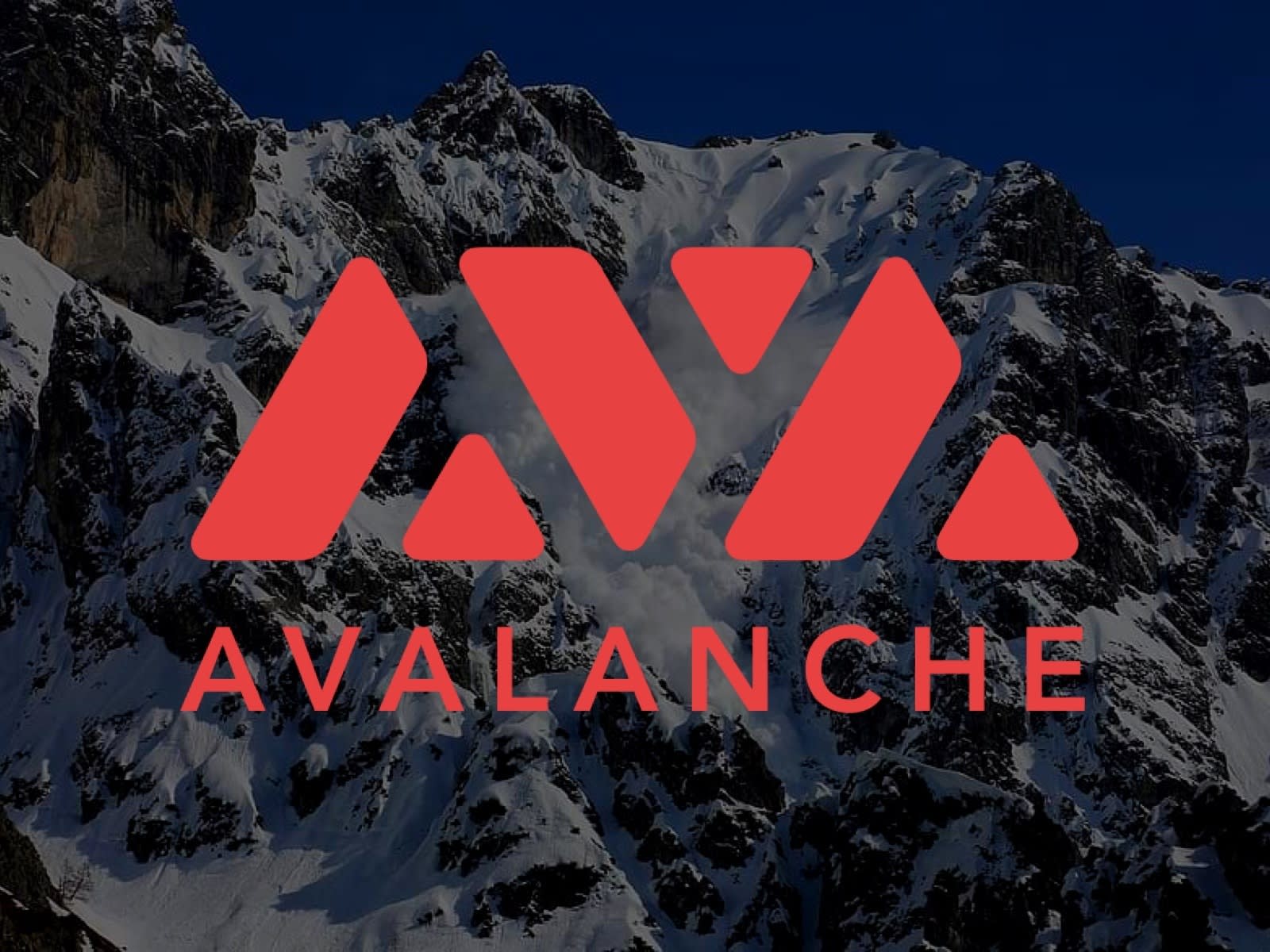Launch of BUSD on Avalanche
🔴On September 20, 2022, Avalanche's Twitter page announced that BUSD will be available on the chain from now on. So we decided to analyze the performance of this stablecoin on Avalanche.

🔴Avalanche Summit
Avalanche Summit is an annual conference for everyone building and using decentralized technology on Avalanche and beyond. At this event, you can learn about the latest Avalanche platform updates, see the innovations, and meet like-minded creators realizing the next generation of Web3.
🟡Binance USD (BUSD)
Binance USD (BUSD) is a stablecoin created by Binance, one of the world's largest cryptocurrency exchanges. BUSD was launched in September 2019 and is backed by US dollars held in reserve by Paxos, a regulated financial institution. According to Binance, for every BUSD token in circulation, there is one US dollar held in reserve. This means that BUSD is fully collateralized, and the value of one BUSD should always be equivalent to one US dollar.
One of the key benefits of BUSD is that it can be used to trade cryptocurrencies on Binance's exchange without having to convert to and from fiat currency. This can make it easier and more convenient for traders to move funds between different cryptocurrencies on the Binance platform. Another benefit of BUSD is that it can be used as a stable store of value. Since its value is pegged to the US dollar, BUSD can be a useful tool for traders and investors who want to hold cryptocurrency without exposing themselves to the high volatility of other cryptocurrencies. BUSD is also available on other cryptocurrency exchanges and can be used for peer-to-peer transactions or as a means of payment for goods and services.


Among the various events happening on the Avalanche chain, in this dashboard we considered the launch of Binance USD (BUSD) on the chain. On September 20, 2022, Avalanche's Twitter page announced that BUSD will now be available on Avalanche. In this dashboard, the performance of this stablecoin on the Avalanche chain is examined. First, we will analyze BUSD swaps. In this section, the following metrics are extracted:
1️⃣. Swap Volume/count (Selling and buying) 2️⃣. Swapper count (seller and buyer) 3️⃣. Currencies to be swapped with BUSD (BUSD 🔁 Tokens) 4️⃣. Top BUSD swappers based on the swap volume/count 5️⃣. Distribution of swappers based on the swap volume/count 6️⃣. Analysis of BUSD swaps on different DEXes.
In the next step, we will check its transfers between different wallets. In this section, after analyzing the volume and number of transfers, the distribution of BUSD among the addresses of CEXes and DEXes is evaluated. Finally evaluate the performance of BUSD holder wallets. The main purpose of this dashboard is to see if the launch of BUSD on the Avalanche chain was successful or not.
In this dashboard, Flipside database is used to extract data. BUSD trading data (CONTRACT_ADDRESS = lower('0x9C9e5fD8bbc25984B178FdCE6117Defa39d2db39')
) is obtained from the avalanche.core.ez_dex_swaps table. Avalanche.core.fact_token_transfers table is also used to check BUSD transfers between different wallets. All data can be displayed in daily, weekly and monthly time frames. But by default, the data is shown in weekly time frame.

🔴 Avalanche
Avalanche is a blockchain platform that aims to provide high throughput, fast finality, and low transaction fees. Avalanche is a Layer 1 protocol, which means that it is a standalone blockchain that does not rely on other blockchains to function.
One of the key features of Avalanche is its consensus mechanism, which is called the Avalanche consensus. The Avalanche consensus allows for multiple subsets of validators to reach consensus on the state of the network in parallel. This allows the network to process a large number of transactions per second while maintaining security and decentralization.
In addition to the Avalanche consensus, the Avalanche platform also supports the creation of subnets. Subnets are independent blockchains that can be customized for specific use cases or applications. Each subnet can have its own consensus mechanism, governance structure, and transaction fees.
